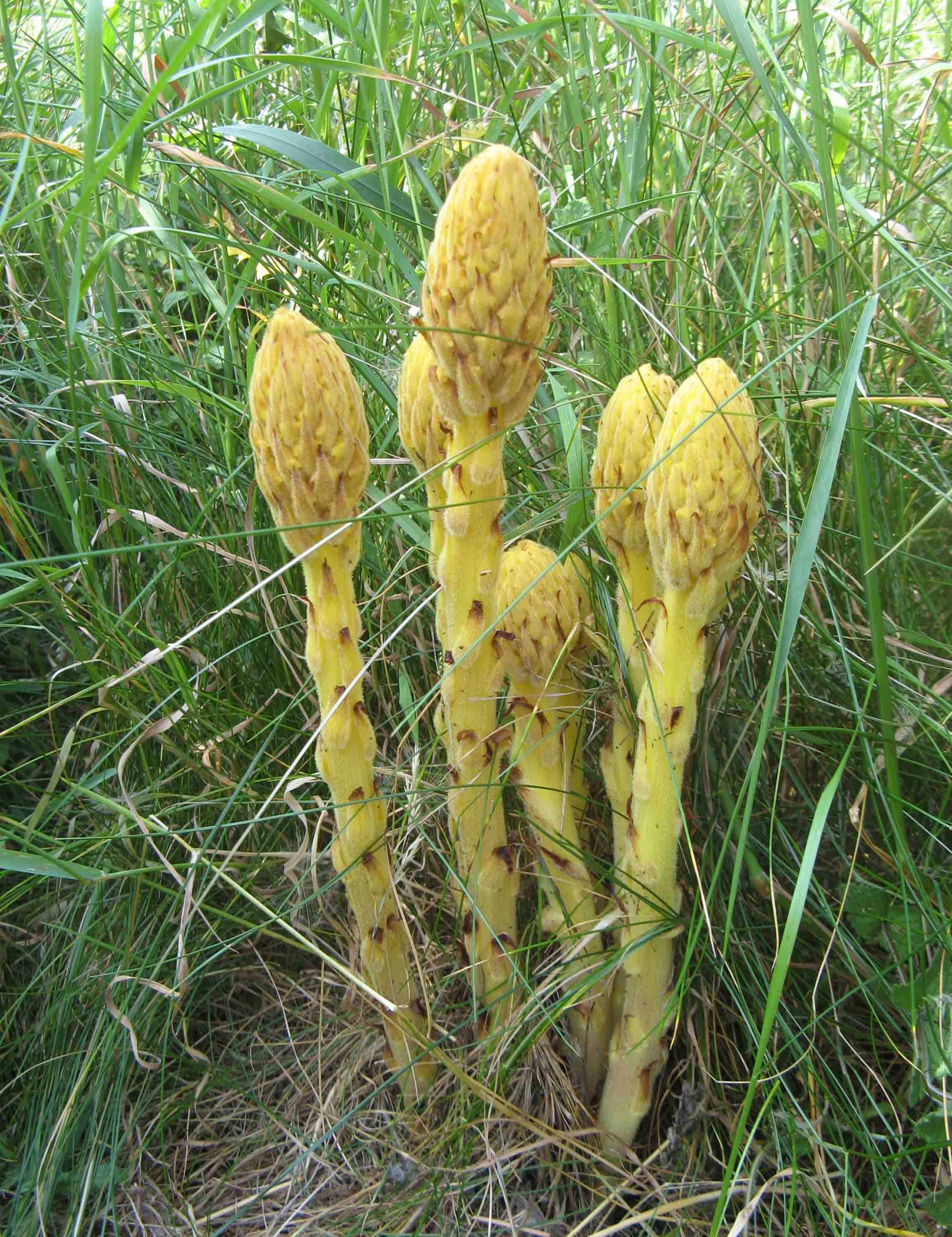I started some popcorn for my garden earlier this May and happened upon an albino corn! Not producing any chlorophyll with which to photosynthesize, the seedling died a few days after this picture was taken. This provides interesting insight into how far the energy stored in the seed of the corn will take the seedling. With only the energy from its seed, and no energy from photosynthesis, the corn will grow to as big as you see the albino corn in this picture. While the seedling can uptake some nutrients from the soil, there is no source of C6H1206, (glucose). This 1955 article by Heinz Seltman describes the fate that awaited my albino corn: "After 12 days the growth tips of the older leaves of the albino seedlings showed necrotic areas. Rates of growth of the albino plants decreased from 12 to 15 days and death occurred approximately 20 days after zero time." I had already removed the plants that I needed from the flat so these seedlings continued to grow undisturbed after this picture was taken. Sure enough the albino seedling met its inescapable fate. It is currently little more than a crispy whisp of dead plant tissue while it's compatriots are still alive in the flat.
Interestingly just because the albino plant produces no chlorophyll does not mean it cannot sense light. This picture from the previously mentioned Seltman article shows how albino corn grown in the dark still exhibits etiolation:

While for corn, albinism means certain death, there are some species of plants which produce no chlorophyll and lead long healthy lives. They survive via parasitism. Check out this happy albino, Knapweed Broomrape (Orobanche elatior):

Even more spectacular looking is Monotropa uniflora:
 |
| Credit Gary Munroe |





